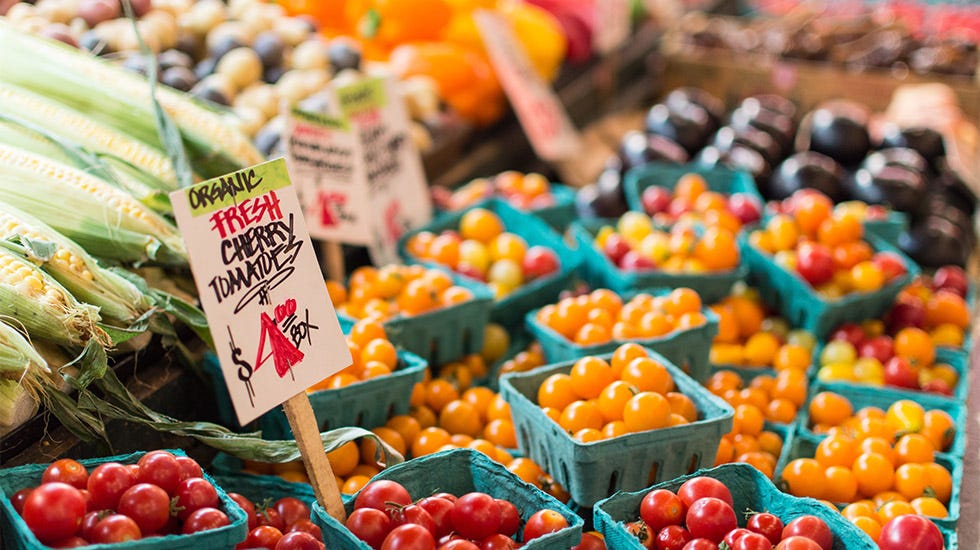What fruits and vegetables should you grow on an urban farm? The options are nearly limitless, especially if your urban farming business is using greenhouses to facilitate growing. When you launch an urban farming business, you will want to grow what your community wants in terms of vegetables and fruits. Before you plant crops, it’s important to canvas the community and find out what types of produce they consume. This may dictate certain vegetables, spices, and herbs that are not native to your region. If you have a high tunnel greenhouse, the possibilities are endless. You can go beyond what the USDA’s hardiness zone map indicates. However, while thinking outside the box to please your community is great for business, you should also grow the basics that thrive well in your specific climate conditions, too.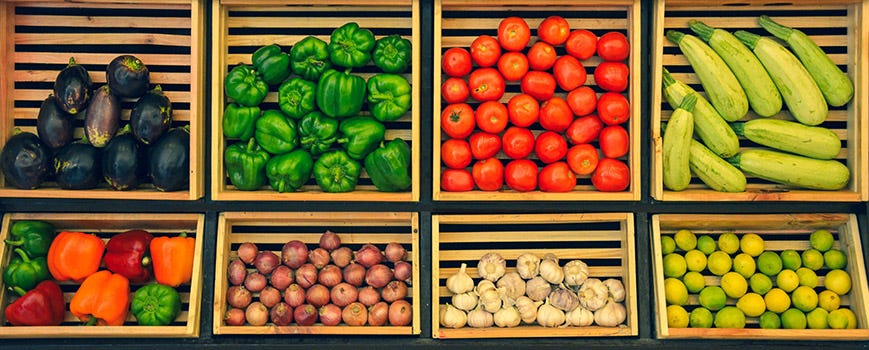
What Fruits and Vegetables Can Your Urban Farming Business Grow?
There are many everyday staples you can grow on an urban farm throughout the year. For example, tomatoes, peppers, cucumbers, and squash can grow in the summer in just about any region. Leafy greens like lettuce, cabbage, kale, and collards have strong leaves that can withstand the frost. You can grow just about any type of potato in the ground or in buckets at any time of year. And you can grow strawberries, blueberries, and raspberries in the spring for high summer demand. Let’s look at some of the various fruits and vegetables your urban farming business can produce.
Root Vegetables and Tubers: Simply put, root vegetables such as carrots are vegetables with edible roots. Tubers are similar in nature because the edible part of the plant also grows underground. In addition to carrots, the most common root vegetables to grow include beets, radishes, onions, garlic, and turnips. Potatoes and sweet potatoes are the most common tubers to grow in North America.
Cucurbits: Cucurbits are a wide variety of vegetables that come in all shapes and sizes. Many are edible, while others are just decorative. These types of vegetables are actually very common. They include squash and pumpkins, gourds, cucumbers, and melons that are native to your growing area.
Cold Hardy Vegetables: Cold hardy vegetables like broccoli, celery, peas, and brussels sprouts can be grown in the colder weather. These plants are tolerant to frost and can be grown in the late fall for an early spring harvest. They should be spaced far apart in your high tunnel, so the leaves don’t touch. Weaker plants need to be thinned out so the strong can survive.
Leafy Green Vegetables: Green vegetables such as lettuce, cabbage, kale, spinach, arugula, collards, and mustard have strong leaves that can withstand cold temperatures. These leafy vegetables can be grown in a high tunnel in less than two months. So, depending on your crop cycle, you can bring a few harvests of leafy greens per year to market.
Warm Weather Vegetables: Eggplant, bell peppers, and virtually every variety of tomato can be grown in a high tunnel greenhouse. That’s because they are resistant to both foliar and soilborne diseases. However, these types of vegetables are not very frost tolerant. We recommend that you don’t try to grow them in a high tunnel greenhouse during the winter in cold regions.
Fruits and Fruit Trees: In a high tunnel greenhouse, fruit trees, shrubs, and vines can be grown in the ground or in containers. Trees such as cherry, peach, apple, pear, and orange can be started in a high tunnel before transplanting outdoors. Grapes, strawberries, blueberries, and raspberries can be grown and harvested inside a high tunnel.
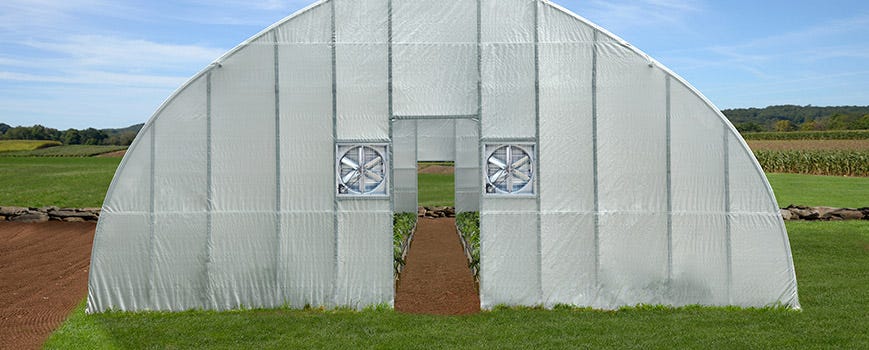
Grow Your Urban Farming Business with High Tunnel Greenhouses
High tunnel greenhouses can help you do amazing things to grow your urban farming business. For example, you can add variety to your crops. This will allow you to grow the hard-to-find items people in your community crave. Using a greenhouse, a farmer in Colorado can grow tropic fruits such as bananas, mangoes, and papayas. Greenhouses have also made it possible to grow fruit trees like pears, peaches, and oranges in cold-weather climates.
What Is a High Tunnel Greenhouse?
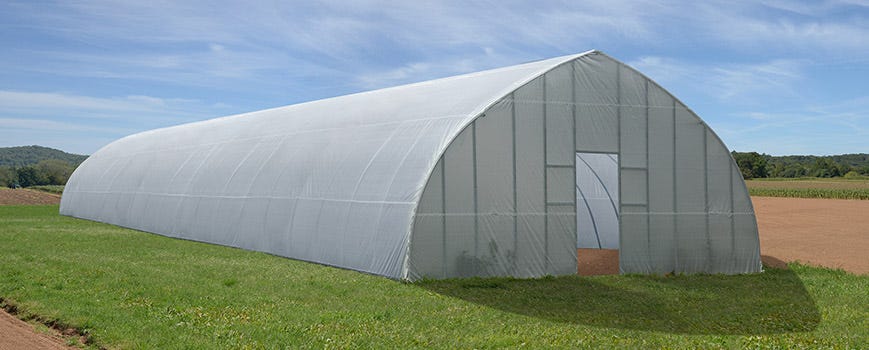
A high tunnel greenhouse, sometimes known as a cold frame greenhouse, is an unheated structure that can help urban farmers extend their growing season. High tunnel greenhouses aid urban farming by providing protection from the elements, which allows them to extend harvests. The result is a more-stable production system that poses less risk of crop failure, which helps urban farmers improve the profitability and productivity of their farms. High tunnel greenhouses are also excellent for overwintering dormant plants, and for getting a head start on spring planting. A high tunnel greenhouse can be used all year long to keep crops protected from the elements. Also, high tunnel greenhouses are valuable in urban farming because they give farmers more control over crops. Plants grown in a greenhouse environment grow faster, more efficiently and there is often a reduced need for pesticides. Read this blog post to learn more about using high tunnel greenhouses for large-scale urban farming.
High tunnel greenhouses simply consist of a translucent fabric cover and a steel frame. They rely solely on the sun for heat. To regulate internal temperature, high tunnel greenhouses are often ventilated simply by lifting the side panels or unzipping the front or rear panel. However, sometimes high tunnel greenhouses can be customized with fans, heaters and other accessories. The ShelterTech High Tunnel Greenhouse, for example, can be used in both ways.
Include Raised Garden Beds in Your Greenhouses
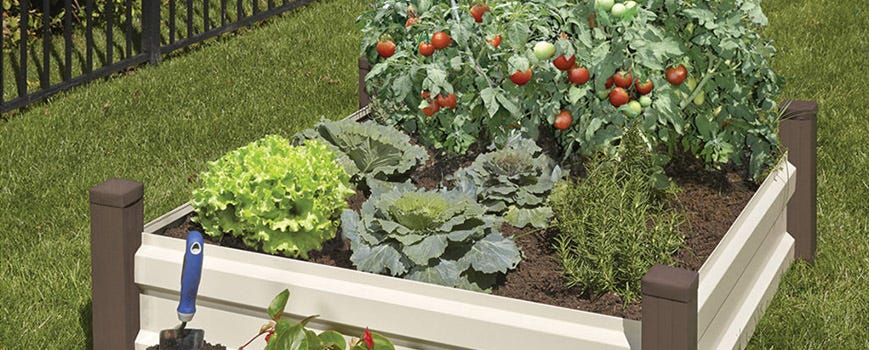 Raised garden beds are great for growing small plots of vegetables. They keep pathway weeds from your soil, prevent soil compaction, provide good drainage, and serve as a barrier to pests such as slugs and snails. You can use raised garden beds on your farm with or without a high tunnel greenhouse. The sides of a raised garden bed keep your valuable soil from eroding or washing away during heavy rains. In many regions, urban farmers can plant earlier in the season because the soil is warmer and better drained when it is above ground level. The best soil to use in your raised bed garden includes lots of compost and organic matter such as composted leaves and ground or shredded, aged bark. You should include enough organic material so that it is neither sandy nor compacted. When the mix is right the soil will bind together when you squeeze it but breaks apart easily when disturbed. This soil is full of living microorganisms that help feed your vegetables. Water will be sufficiently retained and yet won’t saturate the soil either.
Raised garden beds are great for growing small plots of vegetables. They keep pathway weeds from your soil, prevent soil compaction, provide good drainage, and serve as a barrier to pests such as slugs and snails. You can use raised garden beds on your farm with or without a high tunnel greenhouse. The sides of a raised garden bed keep your valuable soil from eroding or washing away during heavy rains. In many regions, urban farmers can plant earlier in the season because the soil is warmer and better drained when it is above ground level. The best soil to use in your raised bed garden includes lots of compost and organic matter such as composted leaves and ground or shredded, aged bark. You should include enough organic material so that it is neither sandy nor compacted. When the mix is right the soil will bind together when you squeeze it but breaks apart easily when disturbed. This soil is full of living microorganisms that help feed your vegetables. Water will be sufficiently retained and yet won’t saturate the soil either.
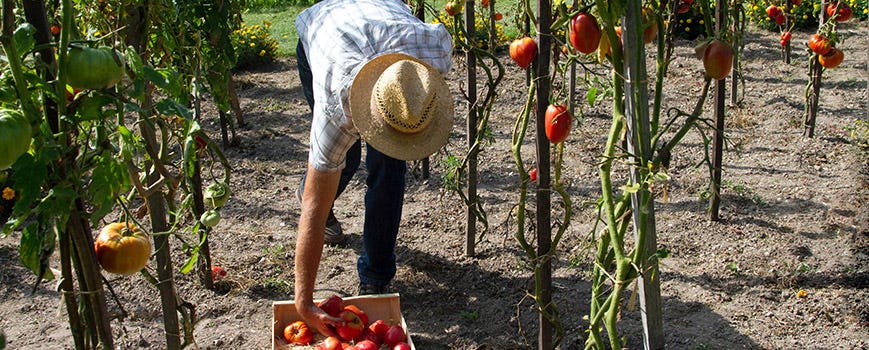
The Urban Farming Trend is Here to Stay
As you can see, urban farming is not a business you can start on a whim. However, the urban farming trend is here to stay, and starting one can be invaluable to food desert. Starting an urban farm can be complicated because of everything it involves. You also must ask yourself if urban farming is the right career choice or business opportunity for you. Can it be a new career, a business investment, or a lucrative second career? Pardon the pun, but an urban farming business can be fruitful for you and your community for years to come. It just takes the right business plan, a little hard work, and a dedication to your community.

